One of the best ways I’ve found to learn new things on social media is to try new things. We experiment, we make mistakes. We succeed, and we fail. And we get a better feeling for how things might work and the best strategies, ideas, and experiments to try next.
I’ve had the privilege of trying out a number of these new strategies and experiments this year, learning tons about the best way to share on social media.
I’d love to share with you what I’ve learned!
Keep reading for my list of the biggest social media lessons from the past 12 months. And feel free to add any further thoughts or learnings of yours into the comments!
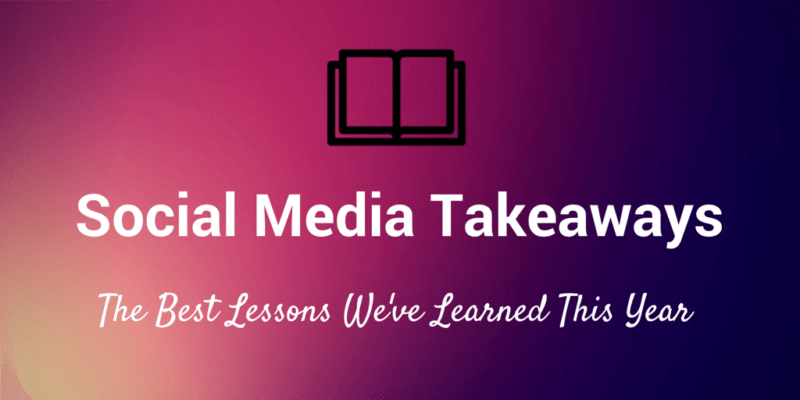
1. How to Get Your Content Seen in the Facebook News Feed
Facebook has built a hugely sophisticated algorithm to help decide which of the thousands of possible stories from your friends and favorite pages will show up in your feed. One side effect of the algorithm is that people who like your page might never see your content.
We went on the hunt for information on how exactly the Facebook News Feed works and the measures that Facebook page owners can take to give their content the best chance of getting more reach.
Here’s a quick overview of some of the things the Facebook News Feed algorithm considers:
- Posts with lots of comments
- Posts with lots of likes
- Post types that users seem to prefer more than others (e.g., photo, video, or status update)
- Posts that reference a trending topic
- Posts that receive a high volume of likes, comments, or shares in a short time
- Link posts
- Videos uploaded to Facebook that receive a large number of views or extended viewing duration
- Posts that tag other pages within the text
- Posts that are liked or commented on by one’s friends
- Posts from pages that one interacts with often
- Post types that one interacts with often
- Posts from pages with complete profile information
- Posts from pages where the fan base overlaps with the fan base of other known high-quality pages
- Images and videos that have not previously appeared in the Open Graph
- Links that have not been posted before

For a complete overview of the do’s and don’ts of the Facebook News Feed, visit the full post, which we keep updated with all the latest news.
2. What Is the Ideal Image Size to Share on Twitter and Facebook?
Through much trial and error, we’ve found a single image size that works great for both Twitter and Facebook.
1,024 pixels wide by 512 pixels tall
For example:
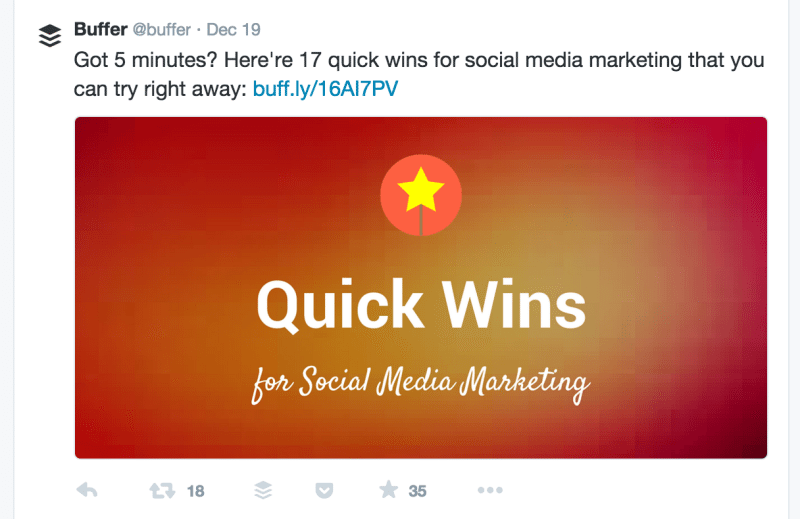
Twitter images of a 2:1 width-to-height ratio will appear fully in one’s Twitter timeline (with no cropping on the top or bottom). Facebook’s recommended ideal size is 1,200 pixels wide by 630 pixels tall, and there’s some room for flexibility there. Our 1024 x 512 image appears perfectly with zero cropping.
For Pinterest images, tall vertical images are best (these also look great on Google+).
For example:
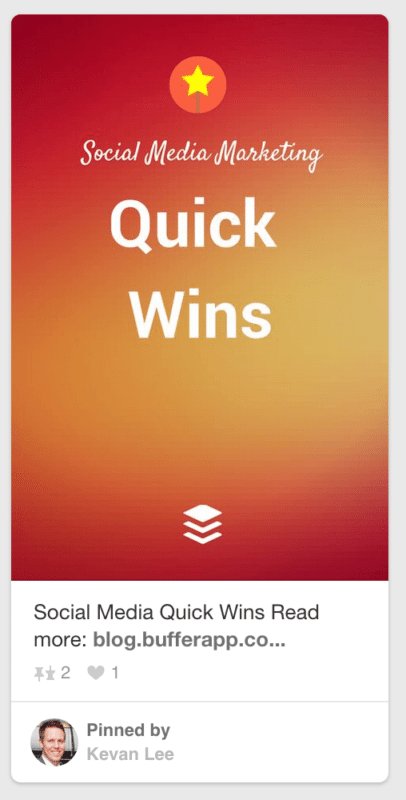
3. How to Find the Best Time to Post to Social Media
We learned a couple neat strategies.
#1. Post when your audience is online.
By many measures, the most logical time to post is when the highest number of your followers and fans are online. We’ve used some neat tools like Followerwonk and Facebook Insights to find these ideal times and implement them into our Buffer schedule.
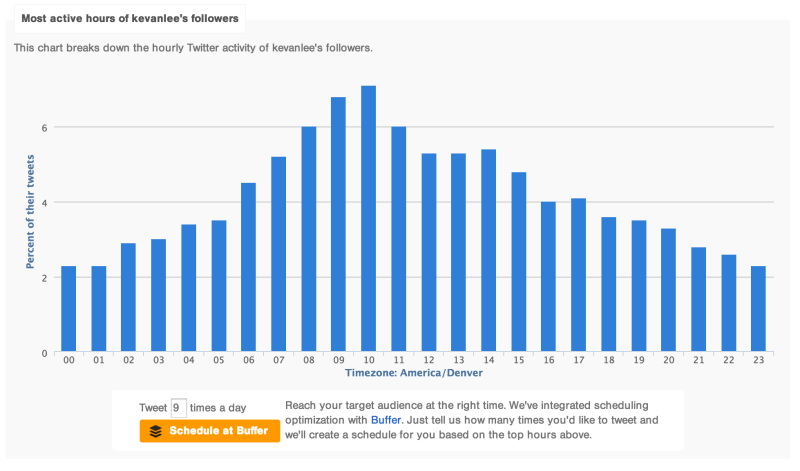
#2. Post when no one else is posting.
On the flip side, we’ve noticed that some of our best posting times seem to be in non-peak hours—late at night or on the weekends when the volume of posts on a social network is typically lower.
This effect is dubbed the Late Night Infomercial Effect—infomercials gain their viewers when there is little else on TV. We found the effect to be true for us on Twitter where our most engaged tweets typically publish on the weekends.
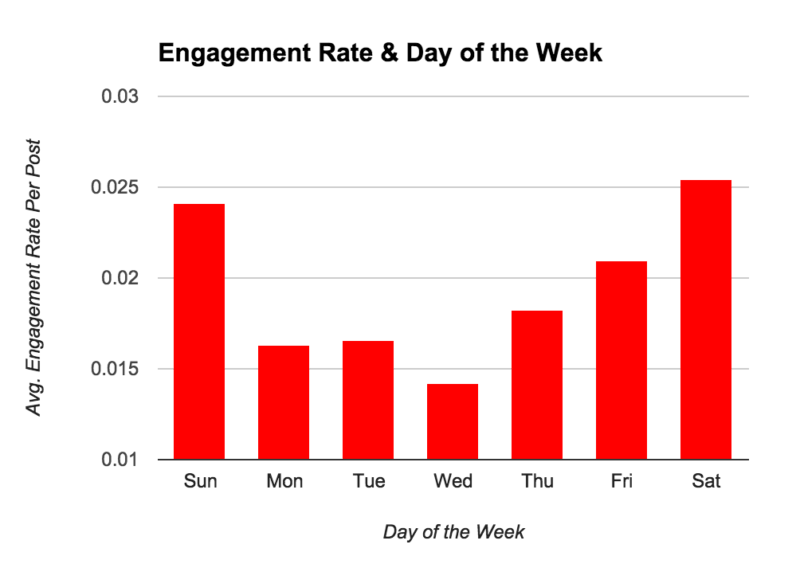
4. What Is the Ideal Length of a Social Media Post?
Social media length was a big topic for us this year as we sought out the top research for the best character count of social media posts. Here’s what we found.
- Twitter – 71 to 100 characters
- Facebook – 40 characters
- Google+ headlines – 60 characters
- LinkedIn – 25 words
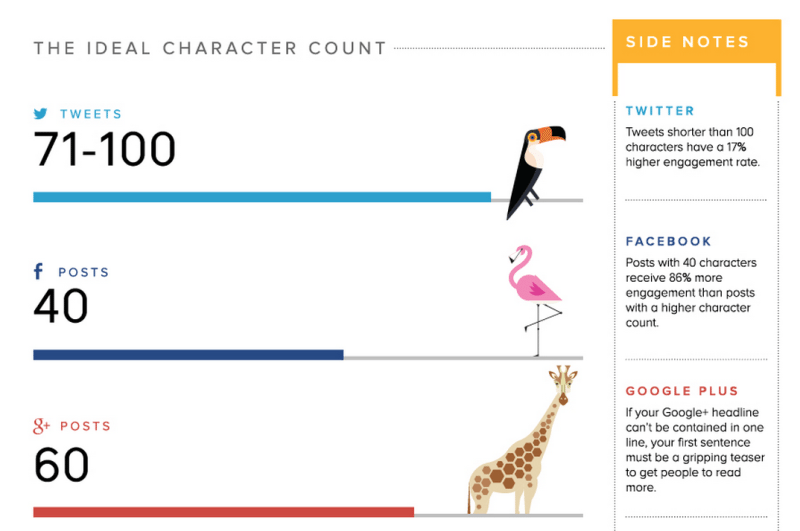
5. The Power of Language: The Best Words to Use on Social Media to Capture Attention
How can you craft a social media message—sometimes in as few as 100 characters!—that gets your point across and inspires the reader to take action?
We found that a lot depends on the specific words you use in your updates and your headlines. Garrett Moon shared a guest post on our site that broke down the most commonly-used words in highly shared headlines.
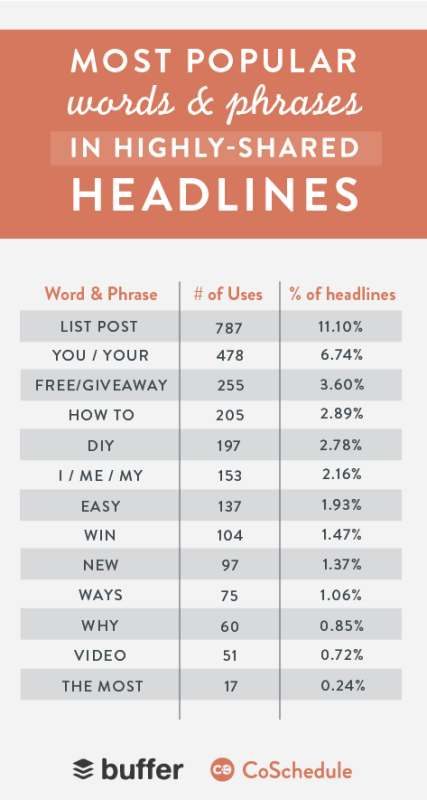
We also compiled a huge list of 189 words that convert, featuring curated samples of some of advertising’s favorite action words. Here are David Ogilvy’s 20 favorite influential words:
- Suddenly
- Now
- Announcing
- Introducing
- Improvement
- Amazing
- Sensational
- Remarkable
- Revolutionary
- Startling
- Miracle
- Magic
- Offer
- Quick
- Easy
- Wanted
- Challenge
- Compare
- Bargain
- Hurry
6. One of Twitter’s Best (and Free!) Advertising Tools: Twitter Cards
Earlier this year, Courtney did an incredible amount of research into Twitter cards, finding out how to set up this free resource and how to implement it in a variety of different ways for your Twitter profile.
Here are the 10 different Twitter cards options at your disposal:
- Summary card
- Large photo summary card
- Product card
- Player card
- Audio card
- Photo card
- Gallery card
- App card
- Lead generation card
- Website card (see sample below)

A couple of the most valuable ones for us have been the summary cards, which provide additional information for our blogposts, and the lead generation cards, which we have used to grow our email list and share our ebooks.
7. How to Create a Facebook Link That Others Will Clamor Over
Facebook’s Open Graph gives us marketers an amazing suite of options to control the way that our articles look when they’re shared to Facebook (other networks like Google+ use these tags, too). When you share a link to Facebook, the author of the link has control over just about everything:
- The main image of the article
- The title of the article
- The description of the article
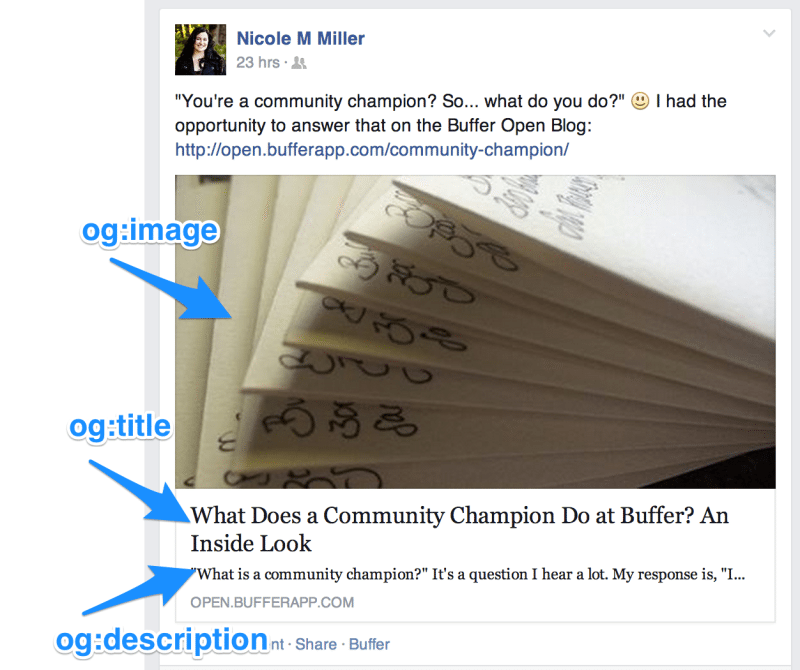
To edit this for your articles, you can install a helpful plugin like Yoast SEO Plugin or edit the HTML code of your pages yourself. We wrote up some full details of how this process might work.
8. Facebook Advertising: Necessary or Not?
As Facebook reach has declined, many marketers have turned to Facebook advertising. You can get a lot of value out of a small budget. Moz found that $1 per day can grow you audience by thousands. Others have seen similar results.
If you just spend $1 per day on Facebook ads, you will get in front of 4,000 people that wouldn’t have seen you otherwise. If you are doing that and your competitors aren’t, you win the awareness game in your niche.
And still others mention ads with a word of warning: Some of the traffic that you receive may lack the quality of organic reach, as explained in this video:
This is an area we’re keen to explore further in the coming months, so stay tuned. Have you had an experience with Facebook advertising? What did you learn?
9. How to Find Your Audience on Social Networks
Ello, Snapchat, Path, and others. New social networks are entering the fray every year, and your audience might be diverting some of its time and energy into new places.
How do you find out where your audience will be?
We shared some really interesting research into the sentiment of different social networks according to different demographics like gender, age, income, and more. Here’s a bit about the gender and age demographics on 15 of the top social networks.
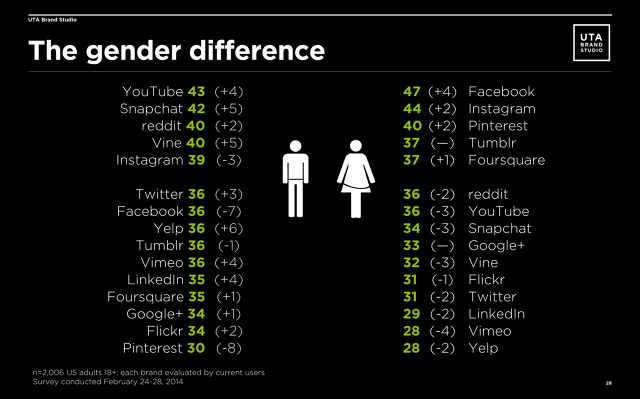
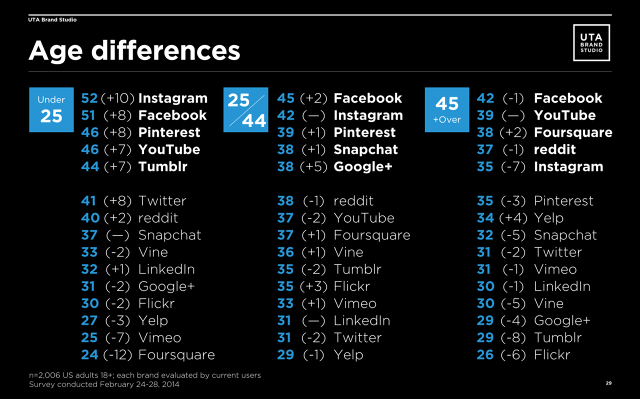
And as for the brand new social networks, we’ve found it useful to dip your toes in to see the type of reaction and engagement you can get with the new crowd. Jay Baer calls this the shotgun vs. rifle approach to social media.
Take Product Hunt, for instance. The site for submitting and finding new online products has built a large community very quickly. We’ve noticed it might be a place that potential a Buffer audience meets, so we’ve sought to engage the community by joining as Buffer creators, submitting our new products and the products of others, and joining into conversations.
10. How to Find Great Content to Share on Social Media
What do you do to fill your queue? It may be the case that the content you need requires much time and energy to unearth. It seems that finding great content to share is a huge need for many of us out there.
We’ve been fortunate to discover many great sources of amazing content over the past few months. Here are a few of our favorite finds.
10 favorite content discovery sites & apps
10 favorite content discovery newsletters
- Inbound.org Digest
- Next Draft
- Brain Food
- NY Times: What We’re Reading
- News.me
- 99U newsletter
- Austin Kleon
- Zen Habits
- MediaREDEF
- 5 Intriguing Things by Alexis Madrigal
These sources make up a majority of the content we deliver through Buffer content suggestions. We’re excited to keep improving this part of our product, too, in the coming months. Stay tuned.
Over to you
What have you learned over the past several months? What has changed about your approach and strategies to social media?
Image sources: The Noun Project, Blurgrounds, Startup Stock Photos
Try Buffer for free
190,000+ creators, small businesses, and marketers use Buffer to grow their audiences every month.



